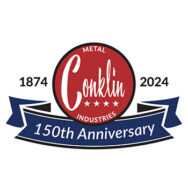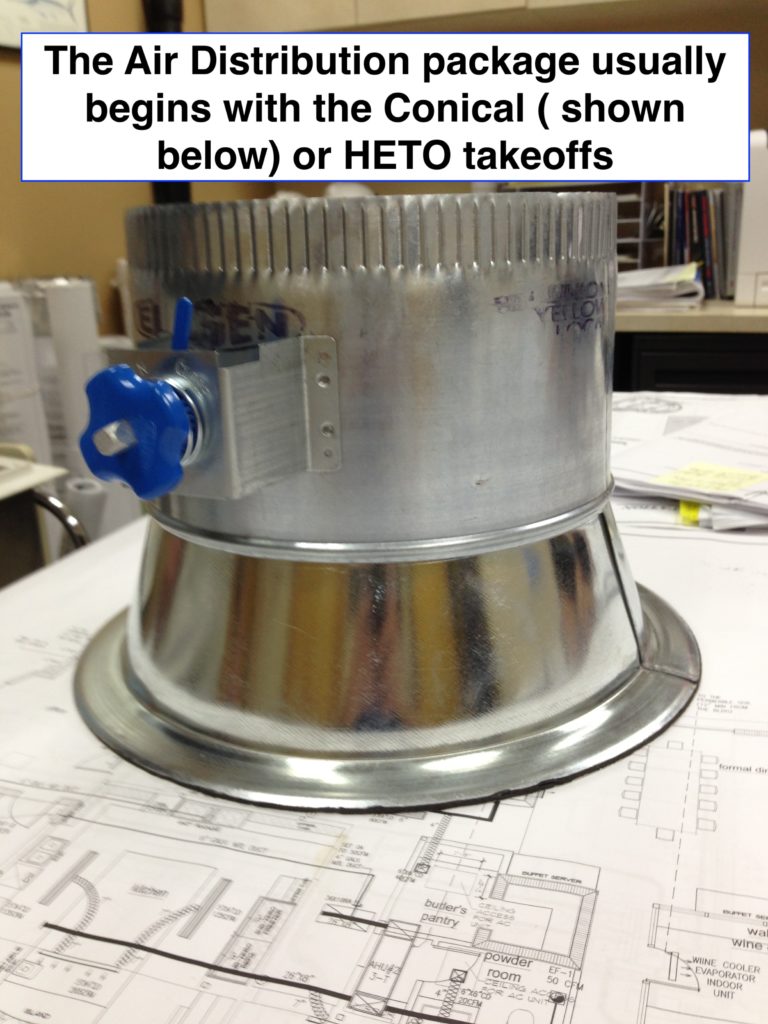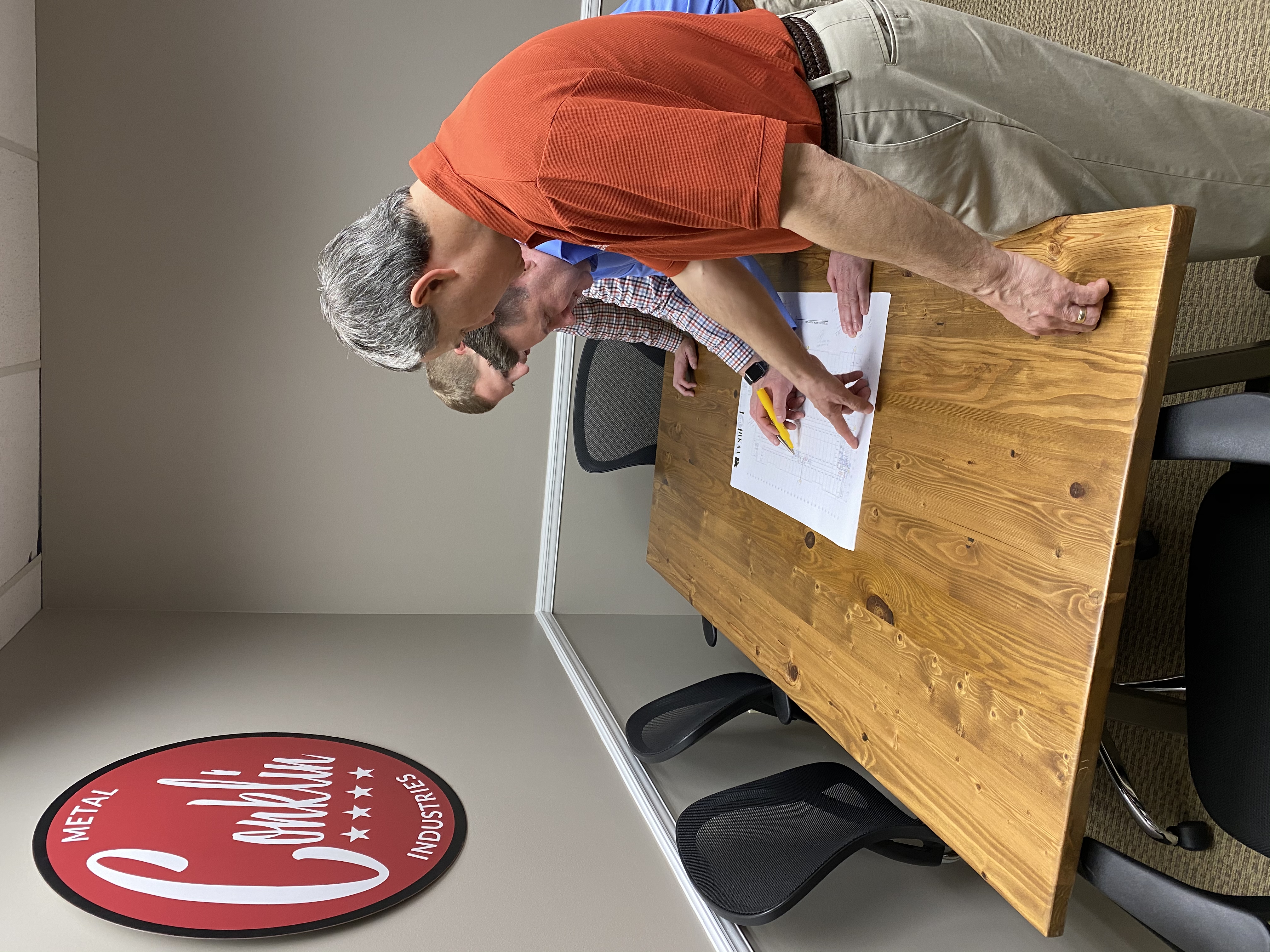What The Air Distribution Package is…
Rectangular Duct on commercial jobs is also referred to as “Trunk Duct” or the “Loop Duct”. It’s typically where the volume of air is higher. When it begins branching off into various areas of the job, there’s a drop in the amount of air as the system disperses air along the way. Though there’s less volume of air, it’s importance is not diminished as it’s distributing air to the individual spaces of the building. Often the best way to understand the Air Distribution package is to look for the Takeoffs—the taps that are cut into the rectangular duct. These are usually HETOs or Conicals and the begin the process of distributing the air throughout the building . In order to distribute the air efficiently, there are dozens of products used. All of these products, when lumped together, comprise the air distribution package and it’s a portion of the Job that the Mechanical Contractor handles differently than the Trunk duct from which it begins.
What’s in the AD Package?
It’s a huge assortment of HVAC products including HETOs, Snaplock and Spiral Round Pipe, Flexible Duct, Wire Rope (Gripple) Hangers, Cable Operated Dampers, Bathroom Fans, Grilles, Ceiling Diffusers, VAV Boxes, Volume Control Dampers, Access Doors, and Fire Dampers.
The Project Manager at the Mechanical will typically have his sheet metal shop make the Rectangular Duct while sending out the air distribution to a company that bundled everything together and bid.
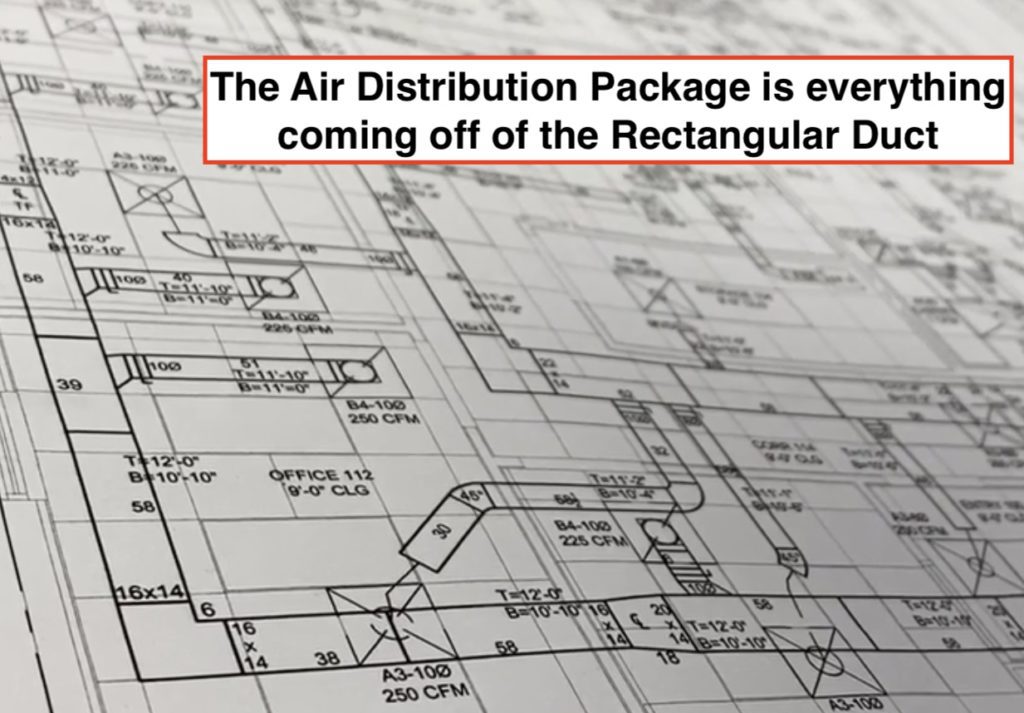

Conklin’s core business is the galvanized sheet steel and duct fabrication supplies used in the construction of commercial rectangular duct. Because we are selling the steel and rectangular duct fab supplies to the sheet metal shop of a Mechanical Contractor we do not participate in the portion of the job that’s coming off of that Rectangular Duct because that same Mechanical “buys out” everything coming off the Trunk lines in the form of an Air Distribution package.
Note: The exception to this would be when Oval Pipe is used in lieu of Rectangular Duct for the Trunk Lines (aka Loop Duct).
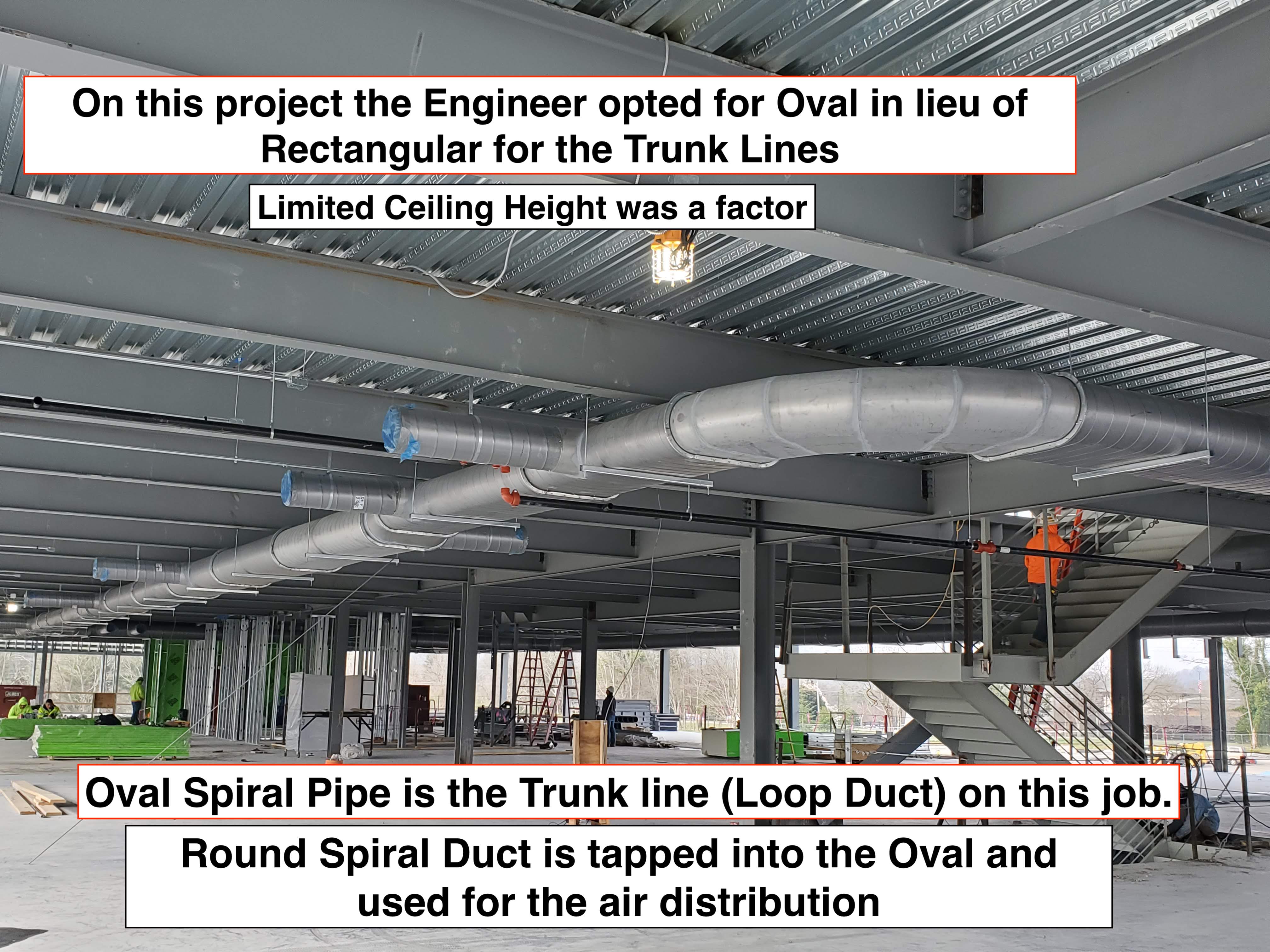
Conklin’s Plan & Spec Division:
We opened our P&S Division with a goal of participating more in the total ductwork job and not just the main Trunk Duct.
How the process works:
- Contractor contacts us and asks “…we’re bidding this project, can you quote it for us?”
- Contractor then sends us the job, usually by Dropbox (or we can get it from the Dodge reports, an online data base of jobs in the area [we have access to 6 states]).
- We’ll then print out the job documents pertinent to us, one of which is the HVAC Floor Plan. We’ll take it and enlarge it and then begin looking at all of the components (for example: supply and return grilles, exhaust registers, exhaust fans).
- We’ll color the component groups separately and then starting counting.
- We’ll also look at the Roof Plan in case we need to see the physical location of the exhaust fans and the slope of the roof to make sure we have the correct curb.
- We’ll look at the schedule of design (aka “what’s specified”). This is an important part of the process because it gives us the details on each one of the components. This is where the engineer specifications come into play and the portion of the takeoff that requires the most of our attention and focus. The exhaust registers for example might give the basis of design is Titus 350 FL, the size and whether it has a damper or not. Much of the time, though there’s a basis or design, if we drill into the actual specs of the job there is listed an acceptable alternative. For example, Titus is the base of design and specified but it there will often be something in the notes that reads “Titus 350 FL” followed by “Krueger, Price Industries or acceptable alternate”. If the language doesn’t include “acceptable alternate” it’s typically a “hard spec” and poses a hurdle for us. It’s at this point that we’ll contact the contractor and say “this is calling for hard spec” for Titus or Metalaire, which can’t do…however, we can do this in Tuttle & Bailey, “can we see if we can get this approved by the engineer?” If not, we can either “No Quote” the fans and just quote the other components or we’ll bow out of the bid process on the specific job. If yes, we take the Titus model and information and go to the vendor we rep—Tuttle & Bailey—put it in their software and cross reference to match up “apples to apples”. In this case it would be the Tuttle & Bailey A64.
- We’ll look for details on the type of Grilles and Fans. On the Fan: is it downblast or inline?; Grilles: Surface Mount (that will screw directly in the sheet rock) or Lay In (between the T bar grid). We’re looking for static pressure, flow rate, voltage and any notes for example factory starter, disconnect switch, insect screen, and roof curb. Since we are not quoting the exact fan model, we have to ensure we’re quoting a true “apples to apples” alternative.
- The next step is turning the Bid to the Mechanical. We’ll tell exactly what we are quoting, we’ll break out each group of components separately so contractor knows exactly what he’s paying for each group.
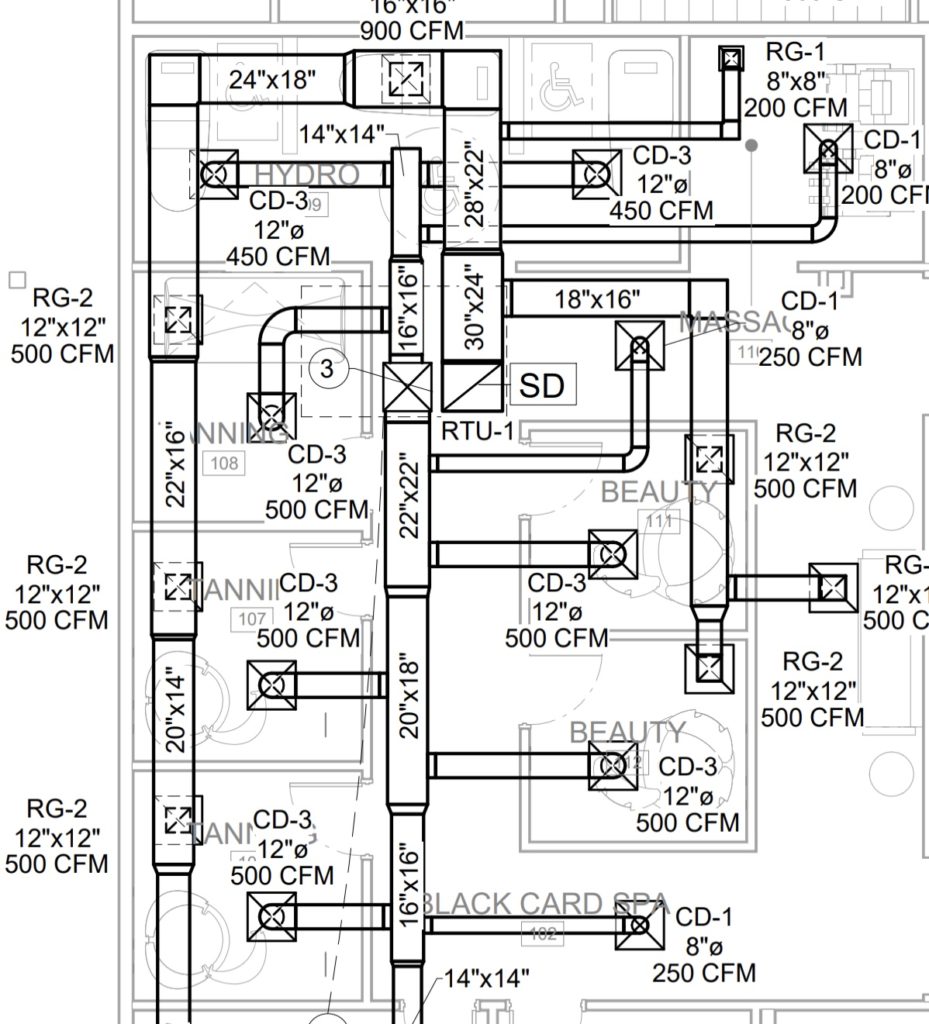
Smaller Jobs are Our Niche:
Larger jobs have a lot of “hard specs” when it comes to specific products and manufacturers of each that must be used: Exhaust Fans and Blowers, GRDs, Louvers. While there’s almost always a comparable product of the above mentioned, engineers will be less flexible on larger jobs and often hard spec certain brands when it comes to certain products. Air Distribution Houses with these Name brand lines utilize that advantage by quoting Lump Sum pricing on the entire package and do not typically itemize or break out pricing on specific products. They also do not allow the contractor to remove it from the package without a high penalty. Therefore if you’re a mechanical you’re often forced to buy all products because of a few “hard spec” products.
While it might seem unfair, breaking out a job showing separate lot prices per product group would be a huge shift in transparency and a is a threat that the contractor would have more leverage to negotiate per product groups.
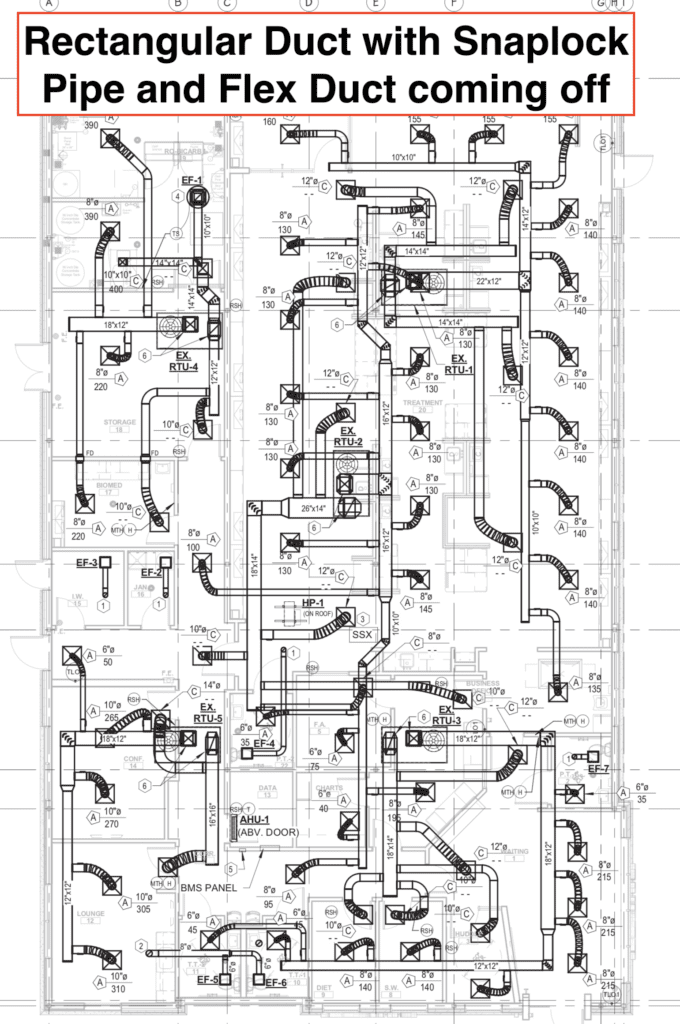
How we are different:
We break everything out. We do this for transparency but also because if we have a great Single Wall or Double Wall Spiral or Oval number and contractor is willing to look at it and “break it out”, we don’t want them to exclude us because of a higher lump sum number when our Spiral or low pressure number might actually be a savings to them in money or lead time. This is an industry in which success on large jobs depends on access to the top Lines of specific types of products. Cook, Titus, Greenheck, Price—these are top lines that are spec’d on every large job. If it’s a hard spec we’re not going to be able to participate. There are lots of hard specs but even when there isn’t there’s a hesitancy by the contractor to take the time to discuss with the engineer. We go to market with customer service as our sole focus and we have to operate looking for problems to solve that will set us apart.
Why breaking out the Spiral Duct is increasingly more common:
What sets us apart from the bigger houses is our faster turnaround on the largest sized item in the AD package and the one that is truly custom made for that specific project: the Spiral Duct.
Though Spiral is vastly different than the air distribution components, it’s treated. They are limited to one or two spiral pipe/oval fabricators and these fabricators are a usually 3 or 4 states away. (Can you imagine how many truckloads would be required on larger Spiral diameters like 36”, 48”, 54”?!) Because these few fabricators are getting all of the work from the largest Air Distribution Houses, their lead times are terribly stretched out in good times. We partner with an assortment of local fabricators in close physical proximity to the project and utilize fabricators based.
How our Core Products give us an advantage:
In the Southeast US, Conklin is one of the largest suppliers of galvanized steel, duct materials/supplies, machinery to the Duct Fabrication industry. Over the past 5 to 7 years we’ve traded the top spot of Spiral Helix distributors, the dominant manufacturer of Spiral Pipe Machinery. Our main business is supplying materials to companies making Rectangular and Round commercial duct systems. This means we have strong partnerships already in place throughout every state in our coverage. While other AD Houses are limited to a few options on spiral duct, we have dozens. This provides a benefit on transportation of material but also on any change orders or jobsite modifications to the duct system (such as when the sprinkler contractors got in first and the ductwork has to move around it). It’s a unique industry in that the part that takes up the most space is also the one that has to be modified on the jobsite the most frequently.
